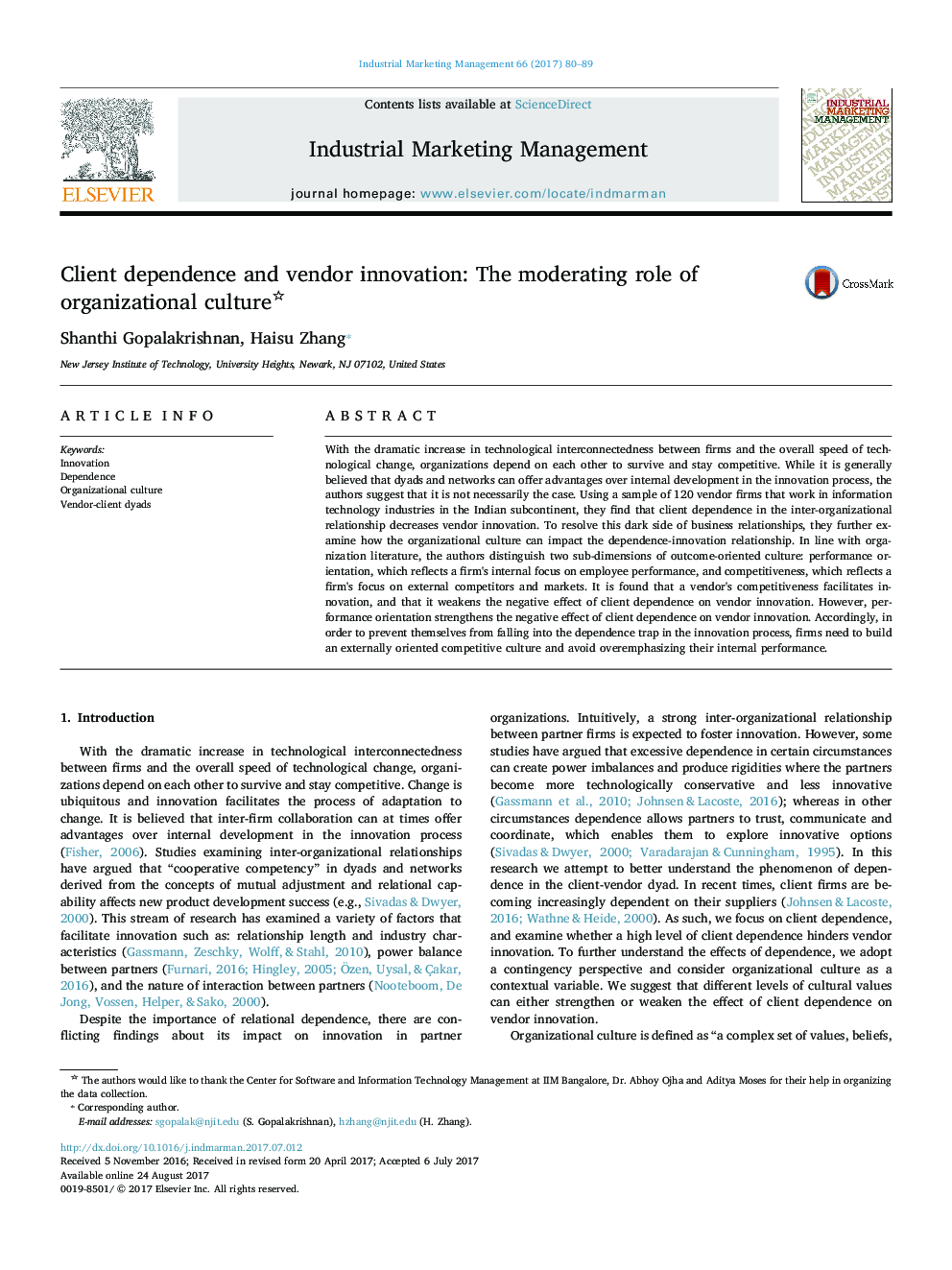| Article ID | Journal | Published Year | Pages | File Type |
|---|---|---|---|---|
| 5111022 | Industrial Marketing Management | 2017 | 10 Pages |
Abstract
With the dramatic increase in technological interconnectedness between firms and the overall speed of technological change, organizations depend on each other to survive and stay competitive. While it is generally believed that dyads and networks can offer advantages over internal development in the innovation process, the authors suggest that it is not necessarily the case. Using a sample of 120 vendor firms that work in information technology industries in the Indian subcontinent, they find that client dependence in the inter-organizational relationship decreases vendor innovation. To resolve this dark side of business relationships, they further examine how the organizational culture can impact the dependence-innovation relationship. In line with organization literature, the authors distinguish two sub-dimensions of outcome-oriented culture: performance orientation, which reflects a firm's internal focus on employee performance, and competitiveness, which reflects a firm's focus on external competitors and markets. It is found that a vendor's competitiveness facilitates innovation, and that it weakens the negative effect of client dependence on vendor innovation. However, performance orientation strengthens the negative effect of client dependence on vendor innovation. Accordingly, in order to prevent themselves from falling into the dependence trap in the innovation process, firms need to build an externally oriented competitive culture and avoid overemphasizing their internal performance.
Related Topics
Social Sciences and Humanities
Business, Management and Accounting
Marketing
Authors
Shanthi Gopalakrishnan, Haisu Zhang,
